Have you ever wondered how a Scalextric car is made?
Most of us probably don’t think twice about all the work that goes into producing a Scalextric model – we look at the catalogue, pre-order some cars and then receive them later in the year. I thought it would be fun – and interesting – to follow one of the new cars from the 2021 range through its development. And I am absolutely delighted that Scalextric designer Caitlin Williams will help guide us through that journey from CAD file to delivery, via the factory in Shenzhen.
First, let’s meet the car – the Corvette C8R…
It’s a while since we’ve seen a modern Corvette in the Scalextric catalogue – the GT2 C6R was the last, released back in 2011. When the new C8R racing car was announced in 2019, I reckon slot car and model companies were rubbing their hands with glee. Simon – the Scalextric researcher – highlighted the new car as a priority and the Scalextric team chose it for their 2021 catalogue, even before the real car had turned a competitive wheel.
The Corvette C8R was developed by Pratt & Miller Engineering to compete in the IMSA GTLM and FIA LM GTE classes and two cars made their race debut at the Daytona 24 hour race in January 2020. The brief for the Scalextric Corvette was handed to Caitlin in March 2020. As with most modern cars, Scalextric had access to the original CAD (computer-aided design) files of the Corvette C8R from General Motors. Caitlin told me “I scaled it down and created a patchwork quilt of surfaces over the top which formed the basis for the rest of the car to be designed. This is probably the best type of source material for designing the most accurate scale model.”
Scalextric models of older cars are usually designed from a combination of diecast models, archive photographs, video and visits to the actual car in a museum or private collection. Hornby are also beginning to use 3D scanning technology, which will feature for the first time on some new models in the 2022 Scalextric catalogue. Anyway, back to Caitlin and the Corvette…
“Once design starts, it takes about six weeks to complete. The CAD model and 20-40 new parts are created per car – this is everything from the large body shell and underpan to the finer details such as wing mirrors and windscreen wipers. The side vents on the Corvette were quite tricky – they weren’t easy to design so they looked accurate but were also injection mouldable! In the end, we had to create them as separate parts which are assembled into the body.”
“When the design is complete, we send images to the car manufacturer for approval of the shape. Depending on the manufacturer, it can take a couple of weeks to receive their feedback. Occasionally we have to tweak our design at this point and resubmit images for approval. Balance is really important – we generally aim for as much shape accuracy on the outside of the car and design the internals to make it fast and fun to race.”
After Chevrolet approved Caitlin’s design, a stereolithographic (SLA) prototype was produced in early May to check all the parts fitted together and the assembled model ran well on the track. The SLA process is simply a posh form of 3D printing. Caitlin explained “It is easier to make changes to the design at this point before anything has been tooled.”
“This SLA was made by an external supplier, they printed the parts and then I assembled the standard components to the underpan and put the rest of the prototyped parts together. Since the new year, we’ve actually purchased our own SLA resin 3D printer which means we can print the prototypes in-house – this has helped reduce the cost and time required for this stage of development.”
The Corvette CAD files were ready to be sent to the factory in China at the end of May 2020… We’ll pick up there in the next part of the Corvette’s story.
Of course, the process so far was completed at the height of the first wave of the Coronavirus pandemic. As Caitlin told me “I actually designed this car working from home – I started it just as lockdown began. I also received the prototype and had to build it up at home which was more of a challenge. Within the team, we’ve had to adapt the way we collaborate; even though our desks haven’t moved, we share our designs over Teams rather than crowding around a single computer.”
I hope you’ve enjoyed that insight into the design and prototype phase of the Scalextric Corvette C8R. I want to thank Caitlin and her colleagues for sending me images and answering my questions for this blog post – I have learned loads from them. Next time, we’ll continue with the Corvette’s journey and I’ll get my hands on the first test shot from the factory. I’ll even get to test drive it!
By the way… The silver C8R will be the first car to be released – scheduled for the third quarter of 2021 – with the yellow car following at the end of the year. They can be pre-ordered here and here.


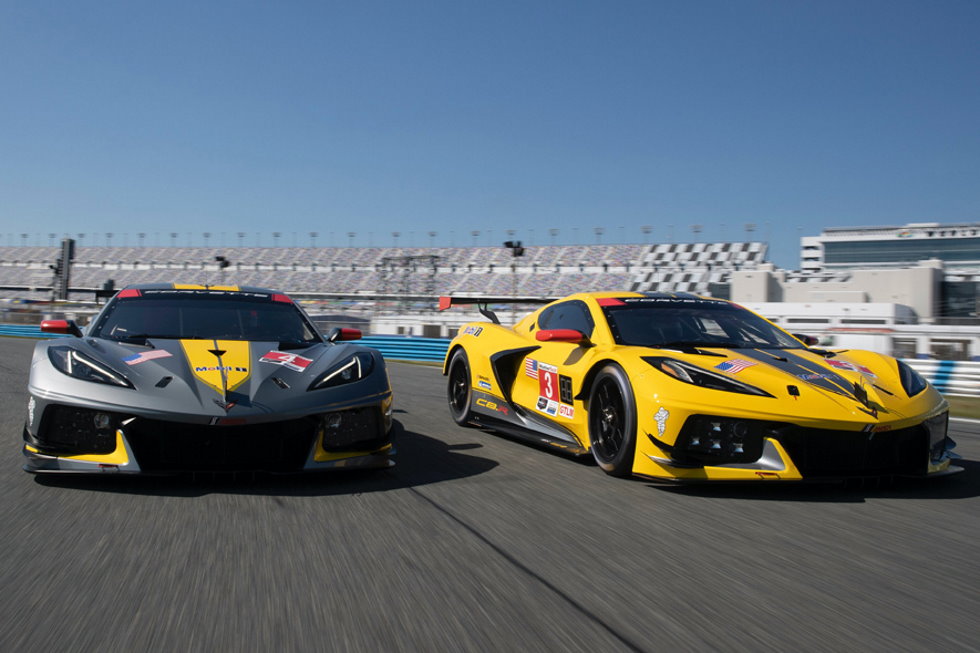
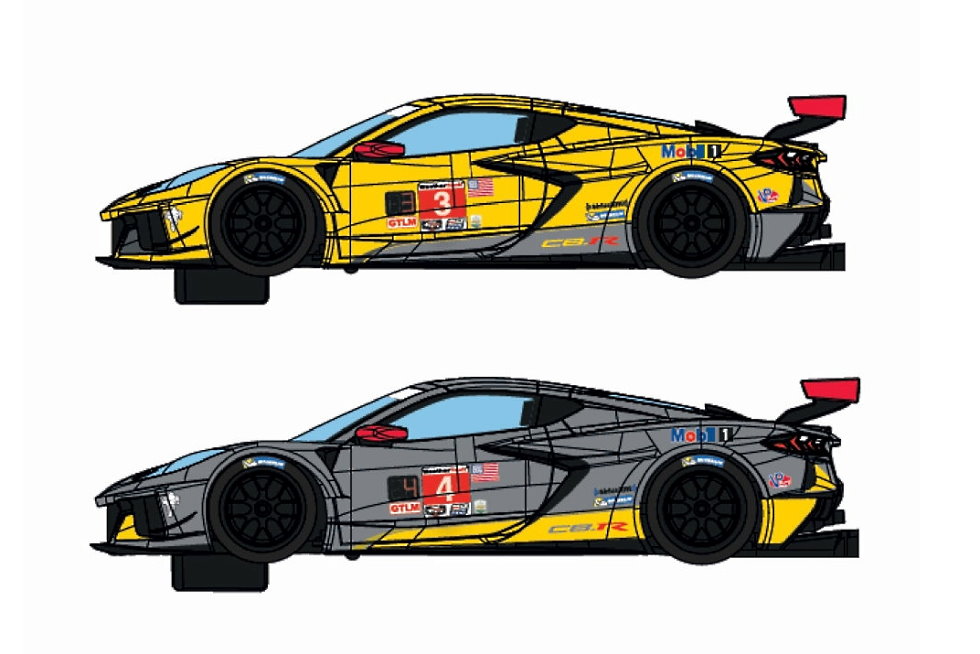
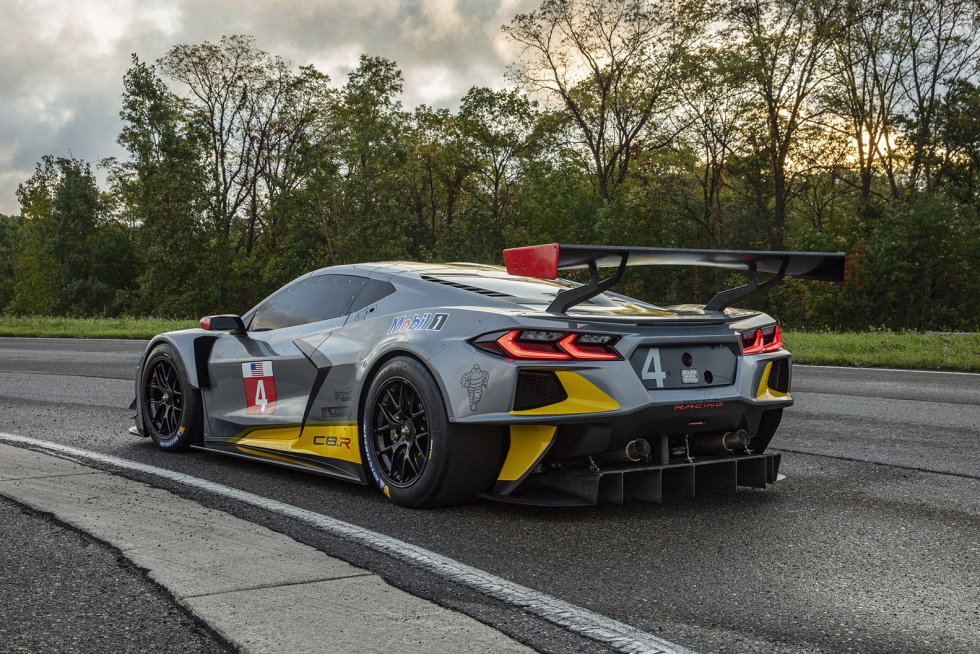
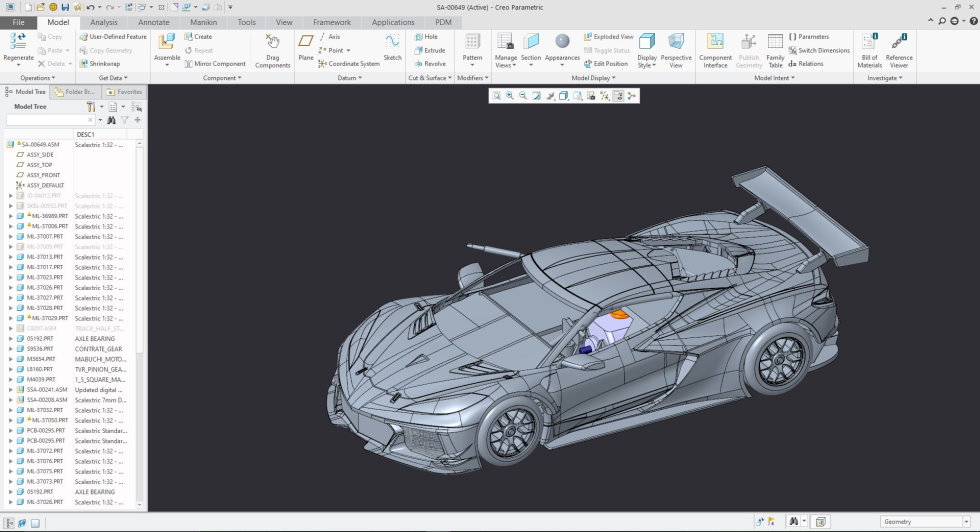
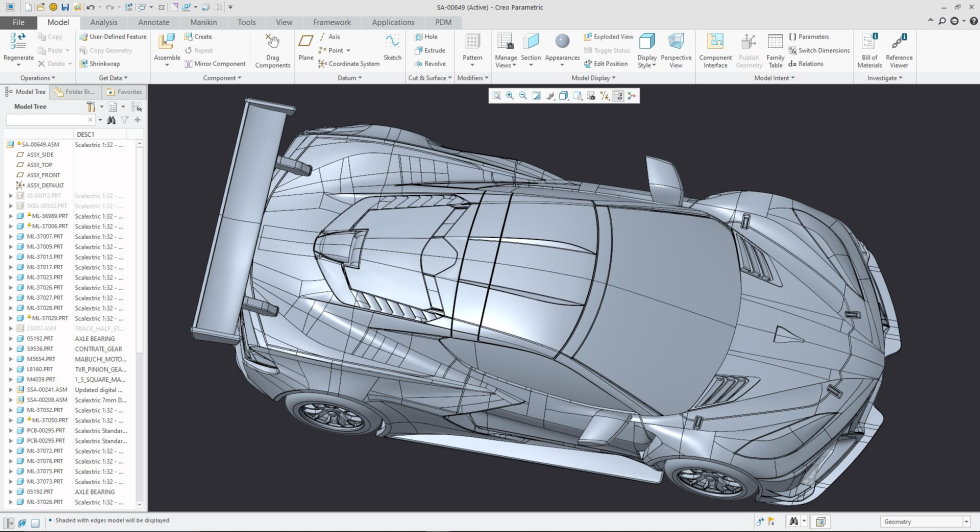
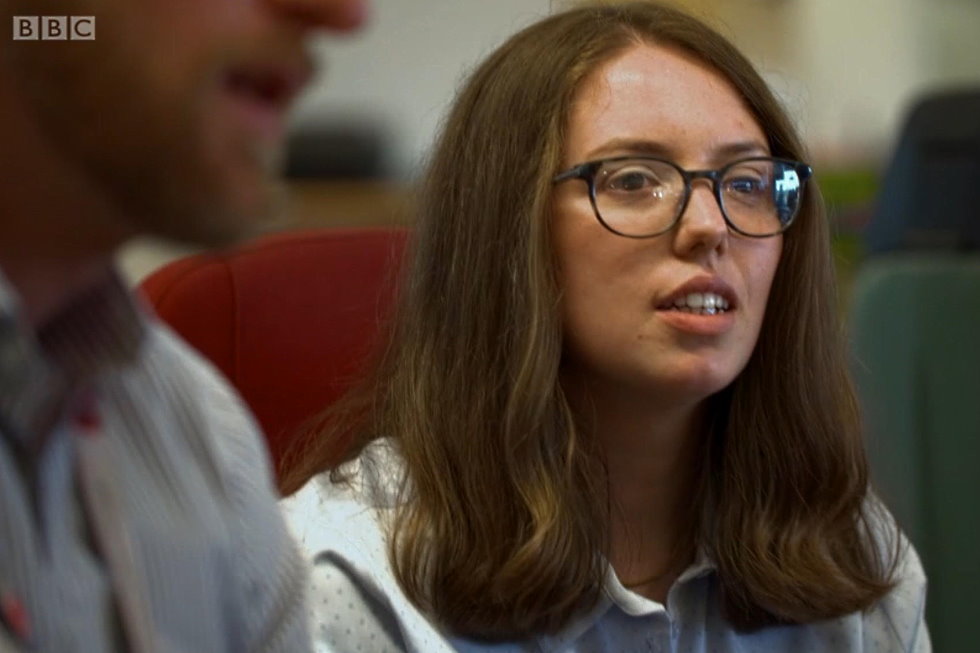

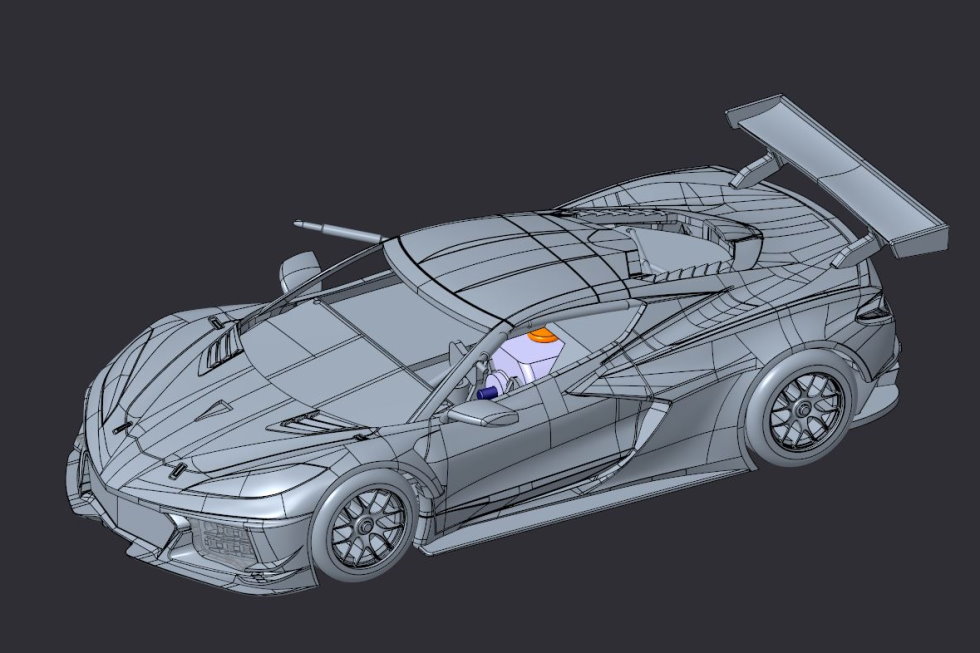
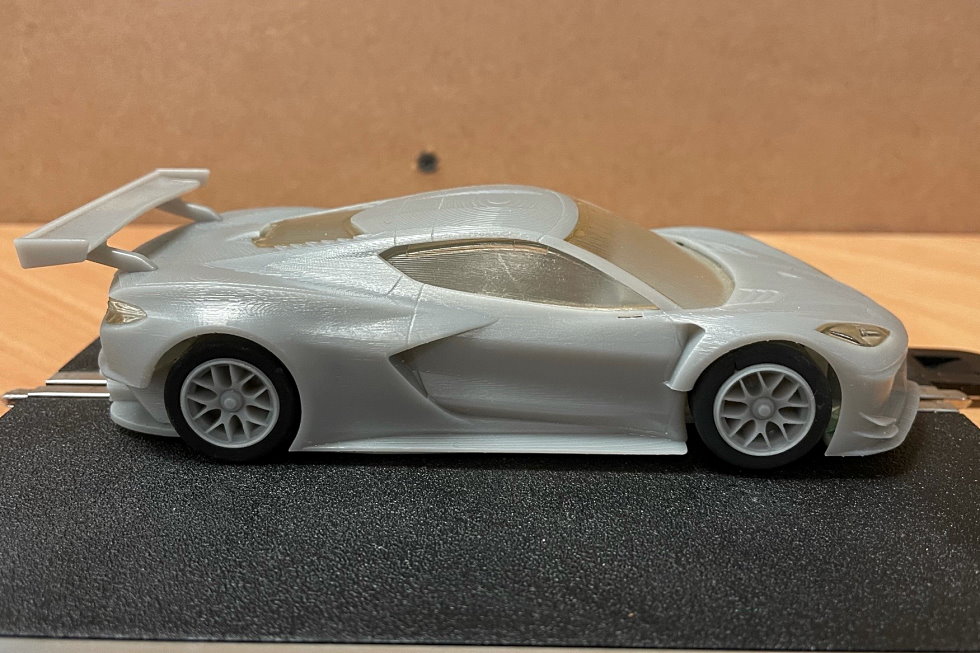
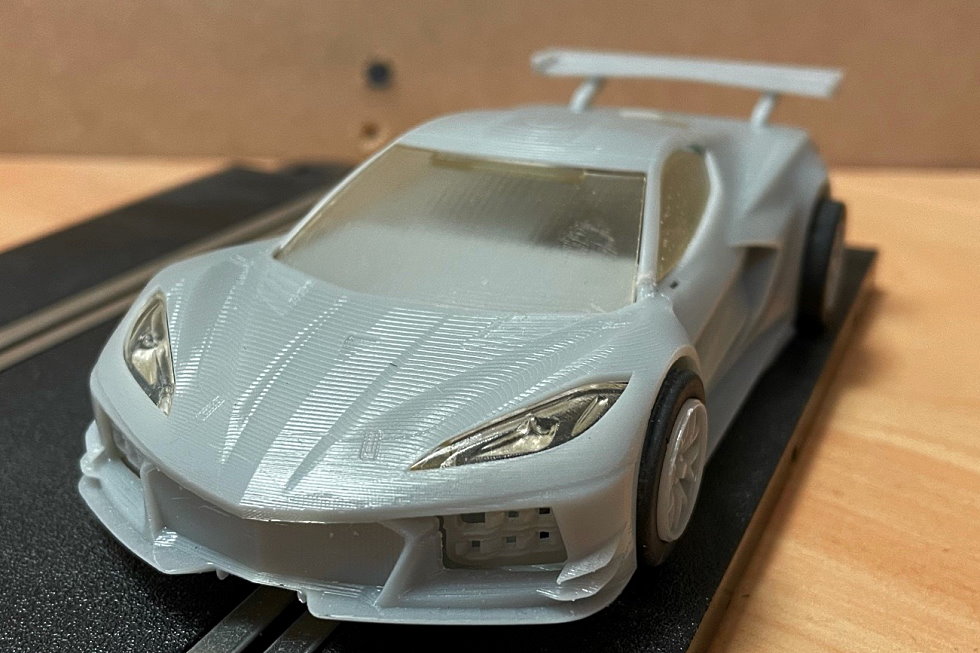
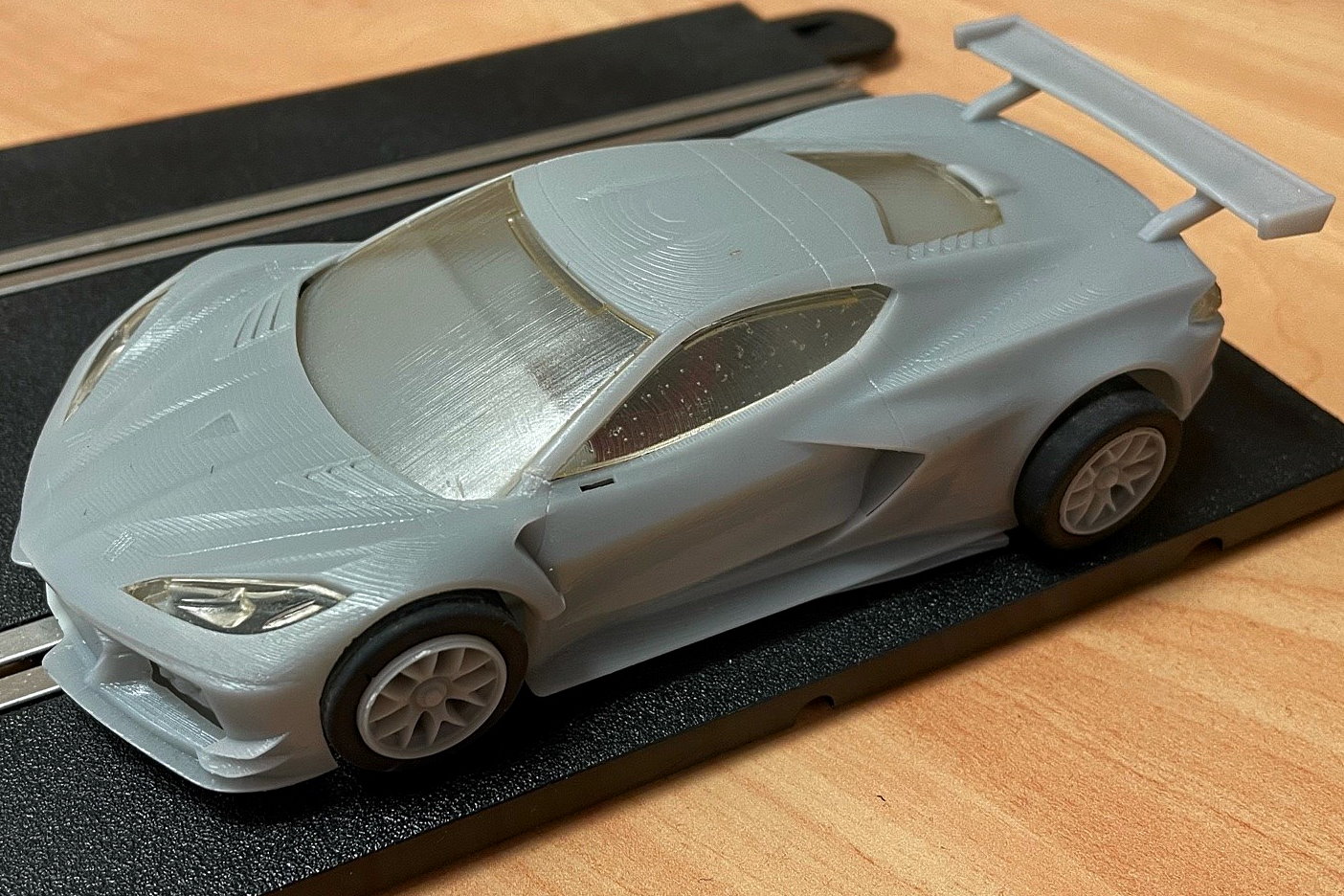
Fantastic for the enthusiastic, but one question, what happens to the prototypes , as these are certainly collectible for any hard core collector like myself
I am guessing they are kept and treasured by the Scalextric team. The prototype is a one-off. There are a couple of ‘first shots’ (we’ll look at one next time) and subsequent decoration samples, then the final signed sample that comes in a proper retail box (like the Batmobile model featured on the blog recently). There are usually a few small changes from that final sample to the production model. Always worth sending Scalextric a message…